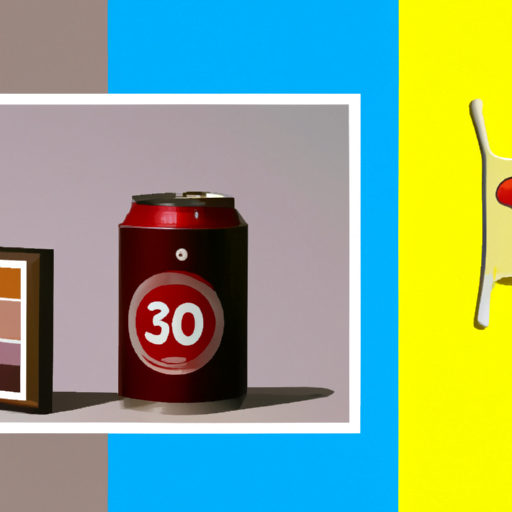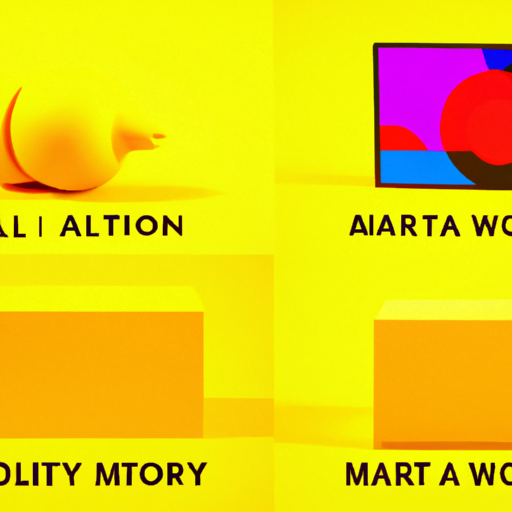
-
Table of Contents
- Motion Graphics: Bringing Designs to Life
- What are Motion Graphics?
- The Evolution of Motion Graphics
- Applications of Motion Graphics
- 1. Advertising and Marketing
- 2. Film and Television
- 3. User Interface Design
- 4. Education and Training
- The Impact of Motion Graphics
- 1. Increased Engagement
- 2. Enhanced Communication
- 3. Brand Differentiation
- 4. Improved User Experience
- Conclusion
Motion Graphics: Bringing Designs to Life

When it comes to visual communication, motion graphics have become an increasingly popular and effective tool. With their ability to combine design elements, animation, and storytelling, motion graphics have the power to captivate audiences and convey complex messages in a visually engaging way. In this article, we will explore the world of motion graphics, its applications, and the impact it has on various industries.
What are Motion Graphics?
Motion graphics can be defined as animated graphic design elements that bring static designs to life through movement. They are often used in video production, film, television, and digital media to enhance storytelling and convey information in a visually appealing manner. Unlike traditional animation, which typically involves characters and narratives, motion graphics focus on graphic design elements such as typography, shapes, and illustrations.
One of the key characteristics of motion graphics is their ability to seamlessly blend different design elements and animation techniques. By combining text, images, and visual effects, motion graphics create a dynamic and engaging visual experience that captures the viewer’s attention.
The Evolution of Motion Graphics
Motion graphics have come a long way since their inception. In the early days of film and television, motion graphics were limited to simple title sequences and basic animations. However, with advancements in technology and software, motion graphics have evolved into a sophisticated art form.
One of the major milestones in the evolution of motion graphics was the introduction of computer-generated imagery (CGI). CGI opened up new possibilities for creating realistic and complex animations. With the advent of software like Adobe After Effects and Cinema 4D, designers gained access to powerful tools that allowed them to create stunning motion graphics.
Another significant development in motion graphics was the integration of 3D elements. By incorporating three-dimensional objects and environments into motion graphics, designers were able to create more immersive and realistic animations. This breakthrough opened up new avenues for motion graphics in industries such as advertising, gaming, and virtual reality.
Applications of Motion Graphics
Motion graphics have found their way into various industries and have become an essential part of visual communication. Let’s explore some of the key applications of motion graphics:
1. Advertising and Marketing
Motion graphics have revolutionized the advertising and marketing industry. They are widely used in commercials, social media campaigns, and digital signage to grab the viewer’s attention and convey brand messages effectively. Motion graphics allow advertisers to tell compelling stories, showcase products, and create memorable experiences that resonate with the audience.
For example, the “Share a Coke” campaign by Coca-Cola used motion graphics to bring their iconic bottles to life. The animated graphics showcased personalized names and messages on the bottles, creating a sense of personal connection and driving consumer engagement.
2. Film and Television
Motion graphics play a crucial role in film and television production. They are used for title sequences, visual effects, and scene transitions, adding a layer of visual interest and enhancing the overall viewing experience. Motion graphics can set the tone of a film or TV show, establish the brand identity, and provide important information to the audience.
A notable example is the opening title sequence of the TV series “Stranger Things.” The retro-inspired motion graphics, combined with eerie music, instantly transport viewers into the show’s mysterious and nostalgic world.
3. User Interface Design
Motion graphics have become an integral part of user interface (UI) design. They are used to create interactive and engaging experiences in websites, mobile apps, and software interfaces. Motion graphics can guide users, provide feedback, and add visual interest to the user interface, making it more intuitive and enjoyable to use.
For instance, the loading animations in popular apps like Instagram and Facebook use motion graphics to entertain users while they wait for content to load. These animations not only serve a functional purpose but also enhance the overall user experience.
4. Education and Training
Motion graphics have proven to be highly effective in educational and training contexts. They can simplify complex concepts, explain processes, and engage learners in a visually stimulating way. Motion graphics make learning more interactive and memorable, helping students and trainees retain information more effectively.
For example, the Khan Academy, an online learning platform, uses motion graphics to explain various subjects, from math and science to history and art. The animated visuals help break down complex topics into digestible chunks, making learning more accessible and enjoyable for students of all ages.
The Impact of Motion Graphics
The rise of motion graphics has had a profound impact on various industries and the way we consume visual content. Here are some key ways in which motion graphics have made a difference:
1. Increased Engagement
Motion graphics have the power to captivate audiences and hold their attention for longer periods. The combination of visually appealing design elements and dynamic animations creates an immersive experience that keeps viewers engaged. This increased engagement can lead to higher brand recall, improved message retention, and ultimately, better conversion rates.
2. Enhanced Communication
Motion graphics excel at conveying complex information in a concise and visually appealing manner. By using animations, transitions, and visual effects, motion graphics can simplify intricate concepts and make them more accessible to a wider audience. This makes them an invaluable tool for communicating ideas, data, and stories effectively.
3. Brand Differentiation
In today’s competitive landscape, standing out from the crowd is crucial for businesses. Motion graphics offer a unique way to differentiate a brand and create a memorable identity. By incorporating motion graphics into branding elements such as logos, websites, and advertisements, companies can leave a lasting impression on their target audience.
4. Improved User Experience
Motion graphics play a vital role in enhancing the user experience in digital interfaces. They can guide users through complex processes, provide visual feedback, and create a sense of interactivity. By incorporating motion graphics into user interfaces, companies can create intuitive and enjoyable experiences that keep users coming back.
Conclusion
Motion graphics have become an indispensable tool for bringing designs to life and communicating visually in a dynamic and engaging way. From advertising and film to user interface design and education, motion graphics have found their place in various industries, revolutionizing the way we consume visual content.
With their ability to captivate audiences, simplify complex information, and enhance user experiences, motion graphics have proven to be a powerful tool for businesses and creatives alike. As technology continues to advance, we can expect motion graphics to evolve further, pushing the boundaries of visual communication and storytelling.
